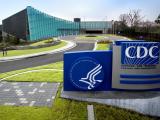Apr 17, 2007 (CIDRAP News) – The US Food and Drug Administration (FDA) today approved the nation's first H5N1 influenza vaccine, made by Sanofi Pasteur, which federal officials hope will buy some time to develop a more precisely targeted vaccine if the virus evolves into a pandemic strain.
The vaccine will not be sold commercially but is being produced by Sanofi for the Strategic National Stockpile of drugs and medical supplies, according to an FDA press release.
"The threat of an influenza pandemic is, at present, one of the most significant public health issues our nation faces," FDA Commissioner Andrew C. von Eschenbach, MD, said in the press release. "The approval of this vaccine is an important step forward in our protection against a pandemic."
If the H5N1 flu virus gains the ability to spread efficiently from person to person, potentially triggering a pandemic, "the vaccine may provide early limited protection in the months before a vaccine tailored to the pandemic strain of the virus could be developed and produced," the FDA statement said.
The FDA said the vaccine is indicated for people aged 18 to 64 who could be at risk for exposure to the H5N1 strain targeted by the vaccine. The vaccine, to be distributed by public health officials if needed, is made at Sanofi's facility in Swiftwater, Pa.
The vaccine is based on an H5N1 virus isolated from a Vietnamese patient in 2004. Today's approval by the FDA follows a Feb 27 recommendation by an FDA advisory panel, which found that the vaccine was safe and effective. However, some of the panel members had reservations about the immunogenicity of the vaccine, which in data submitted to the panel was somewhat lower than previously reported in a 2006 article in the New England Journal of Medicine.
In a clinical trial, two 90-microgram (mcg) doses of the vaccine, administered to 103 healthy adults 28 days apart, generated a protective immune response in 45% of recipients, the FDA noted. (The researchers used a neutralizing antibody titer of 1:40, a fourfold or more increase in antibody titer, to define adequate immune response.) The 45% response rate was lower than the 54% rate reported almost a year ago in the NEJM report, which was based on interim findings. Recipients who received smaller doses of the vaccine were less likely to show a good immune response.
Norman Baylor, director of FDA's vaccine office, told the Associated Press today that though the newly approved H5N1 vaccine isn't ideal for quickly responding to a pandemic, others that employ dose-sparing technologies are under development. "At this point, this is where we are," he said.
Disease experts have expressed concern about the large dose the vaccine requires, in the face of the world's very limited vaccine production capacity. The two-dose course (180 mcg) used in the study is 12 times the standard 15-mcg dose used for each flu strain in the seasonal flu vaccine. If the world's entire flu vaccine production capacity for trivalent vaccine, which currently stands at about 350 million doses annually, were devoted solely to making the new H5N1 vaccine, it would yield enough for only a tiny percentage of the world's population, experts have said.
HHS, in its most recent pandemic preparedness update, acknowledged some of the H5N1 vaccine's limitations. "It is, for now, the best vaccine defense we have, and so we are stockpiling it," the agency said in the Nov 2006 update.
The national stockpile currently contains 13 million doses of the H5N1 vaccine, enough to vaccinate 6.5 million people, Holly Babin, an HHS spokeswoman in Washington, DC, told CIDRAP News today.
HHS has a goal of acquiring enough H5N1 vaccine for 20 million people, but the agency may not necessarily need 40 million doses to achieve that, Babin said. "We're looking at adjuvants [immune-boosting chemicals] and other ways to stretch the vaccine" so that fewer doses will be needed, she said.
Pharmaceutical companies are working on various other H5N1 vaccines and vaccines targeting other flu strains considered to have pandemic potential. Some of these involve producing vaccines in cell culture, a method expected to be somewhat faster than the established practice of growing vaccines in chicken eggs. With egg-based technology it takes about 6 months to produce a vaccine in quantity.
HHS has said it is moving forward with the development of a "clade 2" H5N1 vaccine, based on viruses that circulated in birds in China and Indonesia in 2003-04 and spread to the Middle East, Europe, and Africa in 2005 and 2006
See also:
Apr 17 FDA press release
http://www.fda.gov/NewsEvents/Newsroom/PressAnnouncements/2007/ucm108892.htm
Feb 27 CIDRAP News story "FDA panel supports H5N1 vaccine approval"
Mar 30, 2006, CIDRAP News article "H5N1 vaccine trial shows limited benefit"
Treanor JJ, Campbell JD, Zangwill KM, et al. Safety and immunogenicity of an inactivated subvirion influenza A (H5N1) vaccine. N Engl J Med 2006 Mar 30;354(13):1343-51 [Full text]
November 2006 HHS pandemic planning update
http://www.flu.gov/professional/pdf/panflureport3.pdf


















